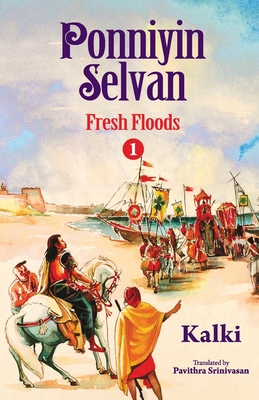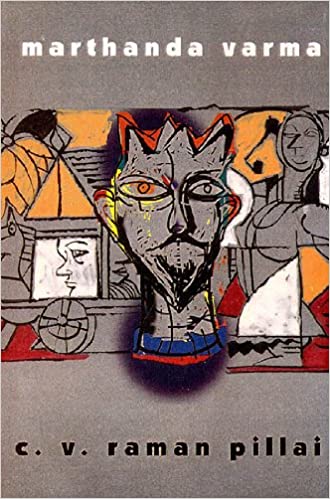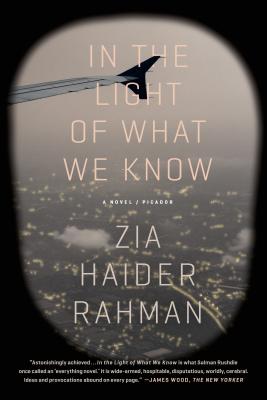
(available at Anchor.fm, Spotify, Apple Podcasts, Castbox, Google Podcasts, Stitcher, TuneIn, Breaker, Pocket Casts, RadioPublic, Overcast)
Hello and welcome to Episode 39 of Desi Books—news and views about desi literature from the world over. I’m your host, Jenny Bhatt. Thank you for tuning in.
Today, in the #FiveDesiFaves segment, we have Veena Muthuraman, who has a debut historical novel out in India now titled The Grand Anicut. She’s sharing her five favorite desi books.
The transcript of this segment is also up on the website.
#FIVEDESIFAVES WITH VEENA MUTHURAMAN — INTRODUCTION
Veena Muthuraman was born and raised in Thiruvananthapuram, India. She took the long and winding path through Chicago and London to Edinburgh in Scotland, where she currently lives. Her debut collection of short stories, A Place of No Importance, set in a place reminiscent of where her roots lie in rural Tamil Nadu, was published in 2016. Her stories and reviews have appeared in Eclectica, Wasafiri, and Scroll.in, among other publications. The Grand Anicut is her first novel.
The Grand Anicut is a historical novel set in the first century C.E. and focuses on the Chola kingdom in Southern India. King Karikalan’s most ambitious infrastructure project is finally becoming a reality: a dam, the Grand Anicut, is being constructed to divert the waters of the river Kaveri, to the elation of farmers across the land and the discontent of the trader class. Amidst all this, the arrival of a Roman ship carrying the merchant prince Marcellus sets off a series of events that will alter the fate of Tamilakam. Rich in historical detail, this action-packed, riveting tale layered with the eternal struggle between divergent ideas is a fascinating journey into one of the greatest periods of Indian history.
And now, here’s Veena Muthuraman with her #FiveDesiFaves.
[music]
#FIVEDESIFAVES WITH VEENA MUTHURAMAN
Thank you, Jenny, for inviting me to be part of the #FiveDesiFaves segment of the Desi Books podcast. I am super excited to be here though I must say at the outset that I intend to cheat. Since I find it impossible to think of my all-time five faves, I am, instead, going to talk about five books by South Asian writers that have been on my mind in the recent past.
This list cuts across genres and languages but the one common theme uniting them to some extent is history: the stories we draw from it and the stories we tell ourselves.
- Ponniyin Selvan by Kalki Krishnamurthy (tr. by CV Karthik Narayanan)
- Poems of Love and War compiled and translated by AK Ramanujan
- Marthanda Varma by CV Raman Pillai (tr. by BK Menon)
- Fear of Lions by Amita Kanekar
- In the Light of What We Know by Zia Haider Rahman
Veena Muthuraman’s debut historical novel is ‘The Grand Anicut’. Catch up with her #FiveDesiFaves by other desi writers: Kalki Krishnamurthy; AK Ramanujan; CV Raman Pillai; Amita Kanekar; Zia Haider Rahman. .@desibooks
Tweet
The first book on my list is a Tamil serialized novel that has been an inspiration for my book. This is a wildly popular novel called Ponniyin Selvan, which translates to “the son of Ponni—Ponni being another name for the river Kaveri, which is very important to the Tamil people and especially in this context, because it is hugely important to the Chola empire. This novel was written by Kalki Krishnamurthy in the 1950s and first appeared in serial form in a weekly magazine called Kalki. There have been many English translations and the one I have read multiple times is a five-volume work by CV Karthik Narayanan which was published by Macmillan Publishers in India.
[Editor’s Note: The book link is not the translation mentioned by Veena Muthuraman but the only one readily available.]
Ponniyin Selvan is set in 10th century Chozha country and it chronicles the travels and adventures of a young man called Vandiyathevan—a brave, well-intentioned, but a slightly clueless young man—who, at the start of the novel, is taking a message, a scroll, to the king of the land. There is a whole host of interesting characters in this novel—spies, messengers, vamps, assassins—there are plots and subplots. Vandiyathevan crisscrosses not only across mainland Chozha kingdom but also makes his way to Elankai/Eezham or Ceylon or Sri Lanka as we know it now. And there is a royal conspiracy to boot as you’d expect to see.
I was introduced to Ponniyin Selvan by my mother who used to read and narrate the story to me during meal-times when I was a child so that I’d eat a little more. And, since that time, I have often imagined stories set in that milieu. When I grew up, I wanted to tell and write stories in that setting but with a much more modern sensibility, if you can call it that. But to do that, funnily enough, rather than traveling forward chronologically, I had to travel back in time, nine centuries earlier to the same geography. This happens to be the world of Sangam poetry which brings me to my second book on the fave list.
“I was introduced to Ponniyin Selvan [by Kalki Krishnamurthy] by my mother who used to read and narrate the story to me during meal-times. […] set in 10th century Chozha country…” Veena Muthuraman #FiveDesiFaves .@DesiBooks
Tweet
The book is called Poems of Love and War: From the Eight Anthologies and Ten Long Poems of Classical Tamil. It’s a translated work and the translator here is AK Ramanujan, who needs no introduction. The book was published by Columbia University Press in 1985.
Sangam literature shouldn’t need an introduction but I am going to attempt one—a very feeble one, just in case. This corpus is the earliest known literature of South India and it’s in Tamil and these poems are linked to the three Sangams, though the word Sangam doesn’t really appear in any of the poems.
The sangams are gatherings of kings, poets, and connoisseurs where these poems are recited. These gatherings are likely mythical but what it does point to is a long poetic tradition going back well into the past that has perhaps been lost over the centuries. Historical records indicate these poems were likely composed between 200 BCE and 300 CE.
The collection spans over 2000 poems written by over 400 poets and many of the poets are named after the poem they wrote. For example, the most famous Sangam poem which has been widely translated goes:
“What could my mother be
to yours? What kin is my father
to yours anyway? And how
did you and I meet ever?
But in love
our hearts have mingled
like red earth and pouring rain”
The poet who wrote this particular poem is called Cempulapayanirar, which translates to the poet of red earth and pouring rain. There are many such examples of the same in the corpus.
Based on their themes, these poems are classified into akam or puram poems. Akam is interior and the poems here are primarily about love. Puram is exterior and the poems in this category deal with kings, death, bravery, war etc. There is also a landscape associated with each akam poem and each landscape is then associated with a certain flower, specific animals, and each evokes a certain mood. I could go on and on about this but here is why these poems are so special and so interesting to me: reading them in the present day, they sound nothing like what a traditional classical poem usually sounds like. In their design, in their simplicity and elegance, they are quite modern, almost post-modern though they evoke a far, distant past. Here is an example from Kuruntokai in Ramanujan’s translation and this poem is called ‘What Her Friend Said’. This is how it goes:
The drum-footed black elephant’s calf,
its crown still soft
runs and plays
with the gypsy woman’s boys
their bodies all tiny joints
boys from the seaside
where liquor is plentiful;
is sweet one day
but devours the millet the next;
so too, his games and laughter
turn to hate
Hopefully that leaves you wanting for more and you can get all that and more in AK Ramanujan’s version of Poems of Love and War.
“[Poems of Love and War, tr. by AK Ramanujan, has] over 2000 poems written by over 400 poets. […] In their design, in their simplicity and elegance, they are quite modern, almost post-modern…” ~Veena Muthuraman #FiveDesiFaves .@desibooks
Tweet
The third book on my #FiveDesiFaves list comes from Kerala—a historical fiction novel written in Malayalam, the language of my childhood. And this novel is also considered the first historical fiction novel to come out of all of south India. This book is called Marthanda Varma and it was written in the 1890s by CV Raman Pillai. There is an English translation published by the Sahitya Academy but I must say its notoriously difficult to get hold of and I have tried. I do hope that a new translation comes out in the near future because this work should be much more widely read.
In many ways, Marthanda Varma is a historical romance in the original sense of the phrase along the lines of Dumas and Walter Scott because that’s really where CV’s influences come from. CV Raman Pillai was a clerk in the colonial service and he was educated in the colonial tradition and so this is not surprising.
The story is set in the 1720s and 1730s and it recounts the power struggle and the series of events leading to Prince Marthanda Varma ascending the throne of the kingdom of Travancore in southern Kerala. There are many threads in this narrative as you’d expect in a historical romance. The main plotline is that of the threat to the Prince from Ettu Veetil Pillamars, a bunch of landowners not very keen on Marthanda Varma becoming the king of the land. The Prince has a very loyal friend, Anathapadmanabhan, who later becomes the King’s General in another book but I digress. And this Ananthapadmanabhan is the hero of the novel. There is a love story involving him and Paru Kutty and there’s also an unrequited love story involving another lady called Zubeida. Then there is the story of Subhadra, a classically tragic character by the end of the novel. But, for the most of the narrative, she is the life of the novel.
Marthanda Varma is of personal interest to me because I was introduced to the work very formally as part of the school curriculum in ninth-grade Malayalam. Like most folks, I’d read the usual suspects by then: The Count of Monte Cristo, The Tale of Two Cities, and The Scarlet Pimpernel. But, for whatever reason, likely sheer ignorance, I hadn’t clocked that these are historical fiction works i.e. they were written a good 100 or 150 years after the time they were set in. It was really only with Marthanda Varma I was introduced to historical fiction being a formal genre with CV Raman Pillai playing an important role. We were all very much in love with Anathapadmanabhan, the dashing young hero, a master of disguises. I mean, who wouldn’t be?
What is ironic and really quite funny, when I think about it now, is the way CV Raman Pillai was introduced to us girls growing up in Kerala, in Trivandrum, the city of Marthanda Varma. We were informed that CV was known as the Sir Walter Scott of Kerala! Now, the only Walter any of us had heard of until that time was Walter de la Mare, who poems we were made to memorize and reproduce —with all the right punctuation marks—and so this made no sense to us. It makes a lot more sense to me now, almost three decades later, because whenever I walk past the Scott Monument or Waverley Station here in Edinburgh which is about once a week, all I can think of is CV Raman Pillai and Marthanda Varma. So that’s my third fave for this list.
[Editor’s Note: The book linked here is the English translation by BK Menon.]
“[Marthanda Verma by CV Raman Pillai is] the first historical novel to come out of all of south India. […] part of the school curriculum in ninth-grade Malayalam.” Veena Muthuraman for #FiveDesiFaves .@DesiBooks
Tweet
For my next recommendation, we go back another century—well, about 50 years or so earlier—and travel way up north to Mughal India in the time of Aurangzeb. This book is called Fear of Lions and it’s by Amita Kanekar, published by Hachette India in 2019. I must say here that I didn’t pay much attention in class when I was taught Mughal history and I don’t know much about that time. I can sort of draw a line from Babur to Aurangzeb with Akbar and Shah Jahan in the middle but that’s about all I know about the Mughal period. But I am fairly certain that even if I’d paid more attention then, I don’t think any of my history books would have told me about this revolt—the Satnami rebellion—that’s at the heart of Fear of Lions.
A revolt in Narnaul, in current-day Haryana, so still very much within reach of the imperial capital at Delhi, where an unlikely group of people—peasants, artisans, outcastes, women—organize themselves against the overwhelming religious and caste hierarchies that are stacked against them. And for a time, a very brief period of time, they succeed and make a difference before they are crushed but we knew that going into the story. It can’t possibly end any other way.
Kanekar brings the Mughal court, the era, and the landscape to life beautifully. But, for me, the most interesting and refreshing part of the narrative is that the author, for the most part, refuses to speak or get into the voice of the subaltern. This, I think, is hugely important but rarely found and very difficult to do in fiction and very difficult to do. I’d highly recommend Fear of Lions to anyone interested in stories set in this era and interested in historical subaltern and anti-caste movements.
“[The Satnami rebellion in Mughal India] where an unlikely group of people—peasants, artisans, outcastes, women—organize themselves against the overwhelming religious and caste hierarchies…” Veena Muthuraman on Fear of Lions on #FiveDesiFaves .@DesiBooks
Tweet
My fifth and final fave for this list is a contemporary work that has been on my mind the past several days and weeks watching the tragedy unfold, in real time, in Afghanistan. This book is called In the Light of What We Know and it was written by Zia Haider Rahman, who I understand is a British author of Bangladeshi origin. This book was published in 2014 by Farrar, Strauss, and Giroux.
I can attempt to tell you what this book is about and what the plot is about. It’s about two brilliant young men—one from a privileged Pakistani family and the other a poor Bangladeshi immigrant, who find themselves in London navigating their way through the English class system, Oxbridge, investment banking, all in the weeks and years leading up to the war in Afghanistan in 2001.
But . . . but . . . to be perfectly honest, the book defies description.
It has everything a novel is supposed to have and there is not one component that’s missing. There were a lot of books that came out of the aftermath of 9/11, the wars in Afghanistan and Iraq, and the 2008 financial crash. But, in my view, In the Light of What We Know is arguably the finest of the lot. It’s unbelievably ambitious and erudite and, at the end of the day, it doesn’t quite live up to its ambition. It’s problematic at times especially in its treatment of women. But here’s the deal: if this is what failure of ambition looks like, give me ten more of these please, I’d happily read them. As I said before, I find myself going back to this work especially with what’s going on in Afghanistan right now.
“There were a lot of books [in] the aftermath of 9/11, the wars in Afghanistan and Iraq, and the 2008 financial crash. […] In the Light of What We Know is arguably the finest of the lot.” Veena Muthuraman for #FiveDesiFaves .@DesiBooks
Tweet
That brings us to the end of my list of five for the #FiveDesiFaves segment of the podcast. Thanks again to Jenny for inviting me to be part of Desi Books. I found it extremely rewarding putting this list together and I do hope that one or more on this list catches your fancy if you hadn’t heard of them or read them already. Thank you.
[music]
You’ve been listening to episode 39 of Desi Books—news and views about desi literature from the world over. I’m your host, Jenny Bhatt. Thank you for tuning in. Today’s #FiveDesiFaves segment was from Veena Muthuraman sharing her favorite books by desi writers. Her own debut historical novel, The Grand Anicut, is out in India now.
Episode 40 (can you believe it?) will be up shortly. Follow on Twitter @desibooks, Instagram @desi.books, Facebook @desibooksfb. Please tag the accounts if you have requests or suggestions. Email at desibooks@desibooks.co. And please go to the website if you’d like to sign up for the free, weekly newsletter. You’ll get all the updates you might have missed as well as some new stuff.
Stay healthy, keep reading, and write well.
[music]
NOTE: If you like the work being done at Desi Books, you can leave some appreciative feedback and sign up for the free, weekly newsletter. And please share this with other readers who might be interested. Remember: A Rising Tide Lifts All Boats.™
Join the Conversation





